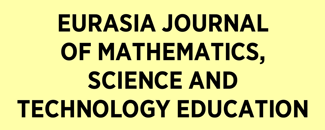Archives
Current issue
About
About us
Aims and Scope
Abstracting and Indexing
Editorial Office
Open Access Policy
Publication Ethics
Journal History
Publisher
Follow us: Twitter
Contact
For Authors
Editorial Policy
Peer Review Policy
Manuscript Preparation Guidelines
Copyright & Licencing
Publication Fees
Fee Waiver Policy for Doctoral Students
EJMSTE Language Editing Service
More
Statistics
Special Issues
Special Issue Announcements
Published Special Issues
RESEARCH PAPER
Analysis of the Impact of New Media Era on Traditional Computer Education
1
Section of Recruitment and Employment, Nanjing Institute of Industry Technology, Nanjing, CHINA
Online publication date: 2017-10-18
Publication date: 2017-10-18
Corresponding author
Fei Lian
Section of Recruitment and Employment, Nanjing Institute of Industry Technology, Nanjing, 210023, China, +86 13851695588
Section of Recruitment and Employment, Nanjing Institute of Industry Technology, Nanjing, 210023, China, +86 13851695588
EURASIA J. Math., Sci Tech. Ed 2017;13(10):6987-6993
KEYWORDS
ABSTRACT
With the continuous popularization of Internet, the influence of new media permeates all fields and levels of society. The arrival of the new media era has brought great influence to the traditional computer education. On the one hand, it provides opportunities for computer teachers to improve their teaching ability and knowledge level, and on the other hand, they bring a certain impact. For computer teachers, how to seize the opportunities brought about by the new media era, and meet the challenges, has become a new topic. All computer teachers should attach great importance to the impact of the new media era, raise the level of computer teaching, and maintains a certain self-control, moral awareness and legal awareness, so that the new media can be used rationally. This paper firstly analyzes the existing traditional computer education under the new media era of the problem, and then elaborates on the positive impact and negative effects of the new media era on the traditional computer education. In addition, the regression model and the factors of negative impact of new media on traditional computer education are analyzed. Finally, it points out that: on the one hand, the computer teacher should speed up the learning of new technologies, explore new teaching methods, change teaching ideas, master the concept and basic knowledge of new media, the use of new media, and the understanding of new media environment, as well as the ethics and safety awareness of new media. On the other hand, new media literacy should be introduced into the computer class. Teachers and students should strengthen the new media literacy, and let students actively participate in activities, to maintain and improve the knowledge of computer. Only in this way can we improve the quality of computer teaching, make better use of new media for computer learning, and make the traditional computer education glowing with new vitality.
REFERENCES (16)
1.
Bao, W. D. (2016). Exploration of case teaching method based on petroleum specialty. Heilongjiang Researches on Higher Education, 3(7), 168-170.
2.
Cheng, M. Y., & Wang, L. (2015). The Mediating Effect of Ethical Climate on the Relationship between Paternalistic Leadership and Team Identification: A Team-Level Analysis in the Chinese Context. Journal of Business Ethics, 129(3), 639-654.
3.
Curini, L., Lacus, S., & Canova, L. (2015). Measuring Idiosyncratic Happiness through the Analysis of Twitter: An Application to the Italian Case. Social Indicators Research, 121(2), 525-542.
4.
Fu, R. X. (2017). Study on the evaluation of college students’ integrity index. Computer simulation, 34(6), 197-199.
5.
Huang, X. X. (2016). Rebuild professional quality education with Internet thinking. Chinese Vocational and Technical Education, 6(4), 80-83.
6.
Huang, Y., Yang, C.G., Baek, H., Lee, S.-G. (2016). Revisiting media selection in the digital era: adoption and usage. Service Business, 10(1), 239-260.
7.
Juan, M. C. (2015). The effects of computer-based games and collaboration in large groups vs. collaboration in pairs or traditional methods. Computers & Education, 87(C), 42-54.
8.
Liu, J. (2017). Research on the practice of computer professional teachers in the background of “Internet plus”. Chinese Vocational and Technical Education, 7(7), 82-87.
9.
Liu, S. (2016). A new model of flipped classroom teaching in mobile new media era is analyzed. Heilongjiang Researches on Higher Education, 13(7), 171-173.
10.
Patchen, T., & Smithenry, D.W. (2015). More than Just Chemistry: The Impact of a Collaborative Participant Structure on Student Perceptions of Science. Research in Science Education, 45(1), 75-100.
11.
Pusaksrikit, T., & Kang, J. (2016). The impact of self-construal and ethnicity on self-gifting behaviors. Journal of Consumer Psychology, 26(4), 524-534.
12.
Rehm, M., Gijselaers, W., & Segers, M. (2015). The impact of hierarchical positions on communities of learning. International Journal of Computer-Supported Collaborative Learning, 10(2), 117-138.
13.
Rubera, G., Chandrasekaran, D., & Ordanini, A. (2016). Open innovation, product portfolio innovativeness and firm performance: the dual role of new product development capabilities. Journal of the Academy of Marketing Science, 44(2), 166-184.
14.
Zhao, M. Q. (2016). The integration design practice of “computer network foundation”. Chinese Vocational and Technical Education, 4(20), 75-77.
15.
Zhong, Z. X., Chai. M. M., & Cheng, X. S. (2016). The design and thinking of flipped classroom in computer classes of Tibetan vocational college. Chinese Vocational and Technical Education, 4(b03), 149-152.
16.
Zhu, J. H., Cui, Y., & Zhu, S. Q. (2017). College students’ network new media reproductive health education effect evaluation. Chinese Journal of School Health, 38(2), 258-260.
Share
RELATED ARTICLE

